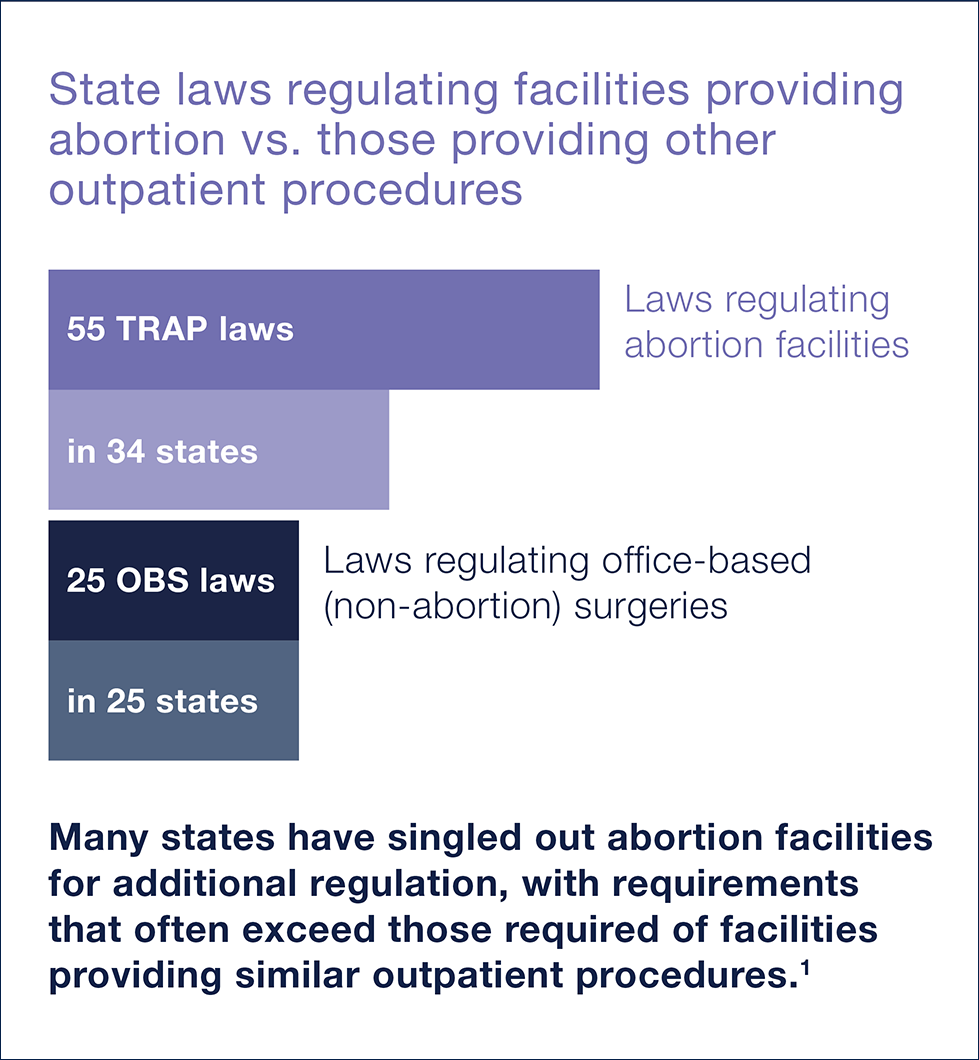States have a role in regulating health facilities to ensure patient safety. For example, states may require facilities that provide office-based surgeries or procedures (OBS) to be accredited or meet infection control standards.
When it comes to abortion, however, many states have singled out facilities that provide abortions for far more stringent regulation, enacting more laws targeting these facilities than laws regulating other, similar office-based procedures.1
Abortion Facilities Regulations
Thirty-four states have a combined fifty-five targeted-regulation of abortion provider (TRAP) laws compared to just twenty-five states with twenty-five laws regulating office-based surgeries (OBS).1 TRAP laws may include provisions such as requiring facilities that provide abortions to comply with licensing standards similar to those for ambulatory surgical centers (ASCs), mandating specific sizes for procedure rooms and corridors, maintaining a transfer agreement with a local hospital, and requiring physicians to have admitting privileges at local hospitals.1 Unlike OBS laws, TRAP laws apply regardless of the level of sedation or anesthesia used, and regardless of whether the intervention is a surgery, procedure, or medication treatment.1
TRAP laws are often adopted with the stated purpose of improving the safety of abortion provision,2 yet published research evidence indicates that there is no patient safety problem in relation to abortion care:3, 4
- Abortion in office-based settings is safe, with a fraction of one percent of abortions in office-based settings having a major complication.3–5
- Existing research shows no difference in patient safety for abortions or other procedures performed in ASCs versus office-based settings.5–7
- There are few studies that rigorously examine the relationships between patient safety and the type of specific facility requirements included in TRAP laws.7 The single study to date on hospital admitting privileges and patient safety did not find evidence that such requirements improve patient safety.8
No rigorous research has found that targeted regulations of abortion clinics improve patient health or safety.2 A panel of clinicians, consumers, and representatives from accrediting bodies reviewed available evidence related to abortion facility type, and similarly concluded that there are no identifiable safety concerns based on facility type.2
Evidence-Based Bottom Line
Regulations that target abortion-providing facilities differently and more stringently than those providing other types of outpatient procedures are not based in scientific evidence.
For more information:

References